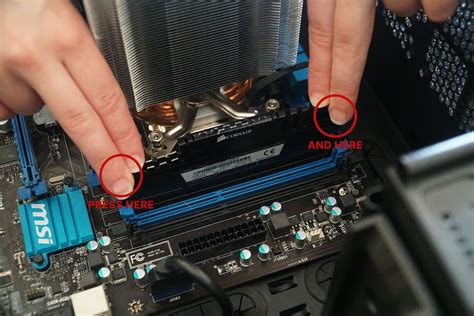How To Install RAM: A Step-by-Step Guide
Adding more RAM (Random Access Memory) to your computer is one of the easiest and most effective ways to boost its performance. A sluggish computer often benefits greatly from a RAM upgrade, leading to faster loading times and smoother multitasking. This guide provides a comprehensive, step-by-step process for installing RAM, catering to various computer types. Remember to always ground yourself before handling any computer components to prevent static electricity damage.
Before You Begin: Essential Preparations
Before you even open your computer case, there are crucial steps to take:
1. Identify Your Computer Type and RAM Compatibility
- Desktop: Desktop computers generally offer easier RAM access. Identify your motherboard model (usually found on the motherboard itself or in your computer's documentation) to determine the compatible RAM type (DDR3, DDR4, DDR5) and maximum capacity.
- Laptop: Laptop RAM installation is more challenging and sometimes requires specialized tools. Check your laptop's manual or the manufacturer's website for instructions and compatible RAM specifications. Some laptops have sealed RAM, meaning it can't be upgraded.
- RAM Type and Specifications: Knowing the correct RAM type (DDR3, DDR4, DDR5) and speed (measured in MHz) is crucial. Using the wrong type will prevent the RAM from working. You can typically find this information in your computer's documentation or online by searching your motherboard model.
2. Purchase the Right RAM
Once you know your computer's requirements, purchase the appropriate RAM modules. Consider the following:
- Type: Match the RAM type (DDR3, DDR4, DDR5) to your motherboard's specifications.
- Capacity: Determine how much RAM you need. 8GB is a good minimum for basic tasks, while 16GB or more is recommended for gaming and demanding applications.
- Speed: Faster RAM (higher MHz) generally results in better performance. However, your motherboard might have a speed limit. Choose a speed that is compatible with your motherboard.
3. Gather Your Tools
For desktop installations, you'll likely only need a Phillips head screwdriver. Laptop RAM installation might require additional tools depending on your laptop model. Always consult your laptop's manual.
Installing RAM in a Desktop Computer
These steps are generally applicable to most desktop computers, but variations exist depending on the motherboard model. Always consult your motherboard manual for specific instructions.
1. Power Down and Ground Yourself
Completely shut down your computer and unplug the power cord. Touch a grounded metal object (like a radiator) to discharge static electricity from your body.
2. Open the Computer Case
Carefully open your computer case. The method for doing this varies, so consult your case's manual if unsure.
3. Locate the RAM Slots
RAM slots are usually long, narrow slots on the motherboard. They are often located near the CPU.
4. Install the RAM
- Open the clips: Most RAM slots have clips on either side that hold the RAM modules in place. These clips need to be opened before inserting the RAM.
- Align and Insert: Align the notch on the RAM module with the notch on the RAM slot. Gently push the module into the slot until it clicks into place. Both clips should snap shut.
- Repeat for Multiple Modules: If installing multiple RAM modules, ensure they're installed in the correct slots (often indicated in your motherboard's manual). Many motherboards require RAM to be installed in pairs for dual-channel operation (for optimal performance).
5. Close the Computer Case and Test
Close the computer case and reconnect the power cord. Turn on your computer and check if the new RAM is recognized in your system's information (usually accessible through your operating system's settings).
Installing RAM in a Laptop
Laptop RAM installation varies greatly depending on the model. Consult your laptop's manual for precise instructions. Attempting to install RAM in a laptop without proper knowledge can void your warranty and potentially damage your laptop.
Troubleshooting
- Computer Doesn't Boot: Ensure the RAM is properly seated in the slots. Try reseating the RAM modules.
- RAM Not Recognized: Check your BIOS settings to see if the RAM is detected. If not, double-check the RAM compatibility with your motherboard.
- Blue Screen Errors: This might indicate RAM incompatibility or a faulty RAM module. Try testing each module individually.
This guide provides a general overview. Always refer to your computer's documentation for specific instructions and safety precautions. If you're uncomfortable performing this task yourself, seek help from a qualified technician. Remember, improper installation can damage your computer components.
